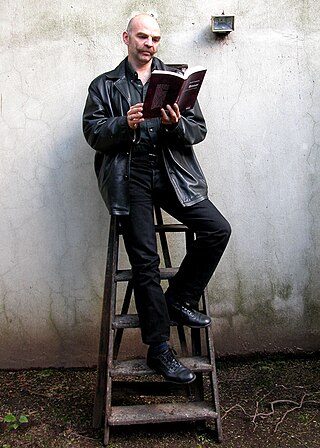Top Qs
Timeline
Chat
Perspective
Martín Caparrós
Argentine writer (born 1957) From Wikipedia, the free encyclopedia
Remove ads
Martín Caparrós (born May 29, 1957) is an Argentine writer, journalist, essayist and social commentator.[1] As an author he is widely known for his detailed and insightful works of fiction and non-fiction. Some of his most notable books include La Voluntad, El Hambre, and El Interior. His books have been translated into numerous languages, earning him widespread acclaim.[2]
Remove ads
Biography
His father was Antonio Caparrós, a renowned psychiatrist. Caparrós began professional writing at age sixteen. His first professional job in journalism was with the now-defunct daily Noticias. He also wrote extensively for international publications, including The New York Times,[3] The Guardian, El País,[4] and The Washington Post.
Caparrós has also been active in various social and political causes. He has campaigned for greater democratic participation in Latin America and to raise awareness about poverty, inequality, and human rights issues. He has received numerous awards for his work, including the Argentinian Planeta Novel Prize for Valfierno in 2004.
Following the 1976 Argentine coup d'état and the start of Argentina's last civil-military dictatorship (1976-1983), Caparrós exiled himself to France. He obtained a History degree in Paris, at the University of Paris. He currently resides in Madrid (Spain).
In 2024, Caparrós announced that he had been diagnosed with Amyotrophic Lateral Sclerosis (ALS), which he had been suffering from for two years before the announcement.
Remove ads
Fiction
- 1984 – Ansay o los infortunios de la gloria
- 1986 – No velas a tus muertos
- 1990 – El tercer cuerpo
- 1990 – La noche anterior
- 1999 – La Historia
- 2001 – Un día en la vida de Dios
- 2004 – Valfierno
- 2008 – A quien corresponda
- 2011 – Los Living
- 2013 – Comí
- 2016 – Echeverría
- 2018 – Todo por la patria'
- 2020 – Sinfin
- 2022 – Dziadkowie (Grandparents)
Non-fiction
- 1992 – Larga distancia
- 1994 – Dios Mío
- 1995 – La Patria Capicúa
- 1997 – La Voluntad
- 1999 – La guerra moderna
- 2001 – Extinción, últimas imágenes del trabajo en la Argentina.
- 2002 – Bingo!
- 2003 – Amor y anarquía
- 2002 – Qué País, Informe urgente sobre la Argentina que viene.
- 2005 – Boquita, Editorial Planeta, 354 pages.
- 2006 – El Interior.
- 2009 – Una luna.
- 2010 – Contra el cambio.[5]
- 2012 – Argentinismos.[6]
- 2014 – Hunger: The Oldest Problem, Melville House Publishing
- 2016 – Lacronica
- 2018 – Postales
- 2019 – Ahorita
- 2021 – Ñamerica
Awards and distinctions
- 1992: Premio Internacional de Periodismo Rey de España
- 2004: Premio Planeta Latinoamérica
- 2011: Premio Herralde de Novela
- 2014: Premio Konex de Platino
- 2016: Premio Cálamo Extraordinario
- 2016: Premio Letterario Internazionale Tiziano Terzani
- 2016: Premio Internacional de Ensayo Caballero Bonald
- 2017: Premio Nacional de Periodismo Miguel Delibes
- 2017: Premio María Moors Cabot, Columbia University
- 2017: Ciudadano Ilustre de la Ciudad Autónoma de Buenos Aires
- 2019: Premio Ítaca en reconocimiento a su trayectoria periodística, Universidad de Barcelona
- 2022: Premio Especial del Jurado de los Premios Archiletras de la Lengua
- 2022: Premios Ortega y Gasset
Remove ads
Filmography
- Crónicas Mexicas, Contrakultura Films, 2003. Directed by Eduardo Montes-Bradley.
- Cazadores de Utopías. Directed by David Blaustein.
- ¿Quién mató a Mariano Ferreyra?, 2013. Directed by Alejandro Rath and Julián Morcillo.
References
Wikiwand - on
Seamless Wikipedia browsing. On steroids.
Remove ads

